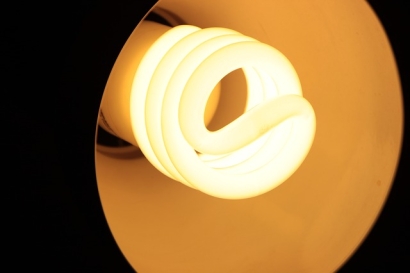
However, you might not have much time or energy remaining at the week’s end to build a compost bin or convert your roofing tiles to solar panels. That’s okay. Here are eight nearly effortless ways to make your home more energy-efficient.
Do you have tile or hardwood? You can get tootsie-warming benefits with a throw rug while improving your energy efficiency, even if you rent.
Why? They provide necessary insulation while keeping your feet from freezing when climbing out of bed on chilly mornings. The Environmental Protection Agency estimates that proper insulation can save up to 15% on your heating and cooling costs.
Estimated cost: Free to $200 or more for a quality rug.
Estimated savings: Up to 15% of your current energy bill.
Did the bulb burn out in one of your lights? Instead of reaching for the cheap incandescents lingering on store shelves, opt for slightly pricier LEDs.
Why? You’ll save money in the end. The Department of Energy estimates that the average household will save up to $225 a year by switching to LED lighting. That more than pays you back for the cost of this eco-friendly, lower-energy bulb.
Estimated cost: Approximately $10-15 per bulb.
Estimated savings: $225 a year.
Add a dimmer switch if you can’t switch all your bulbs or you want to double your savings. Many models are installed with no expert electrician needed.
Doing so can save you up to 40% on your electricity bills. You’ll also make those pricey new LED bulbs last 20 times longer.
Estimated cost: Approximately $20 at many hardware stores.
Estimated savings: Up to 40% on your electricity bills.
Who needs all that artificial lighting, anyway? With spring and summer here, there’s plenty of natural daylight.
Removing heavy curtains allows you to take advantage of passive solar heating. Try an experiment by going without artificial lights the next time you have a full weekend at home. You might find your sleep problems resolve themselves when you let nature reset your circadian rhythms.
Estimated cost: Free.
Estimated savings: Variable.
Regardless of your background check status, a trip to your local hardware store can land you a new gun. However, it only shoots caulk and can save you a bundle while making your home more energy-efficient.
Master the correct technique for caulking a window by holding your new “weapon” at a 45-degree angle as you draw a straight bead. Pro-tip: practice on old scrap paper or cardboard first. You could save 7.5% on average by sealing leaky windows and doors.
Estimated cost: $10-30 at most hardware retailers.
Estimated savings: Several dollars a month, depending on how many windows you fix and the degree of draftiness.
Part of the above equation requires tending to your door. These mobile objects need weatherstripping. Fortunately, it’s even easier to afford and apply than caulk. Many retailers have quality rolls for less than $3, although you can opt for heftier door screens.
Estimated savings: Variable.
Are you sneezing like mad this season? It might not be allergies. When was the last time you changed your HVAC filter?
The experts at the Environmental Protection Agency (EPA) advise doing so every two to three months. However, you might need to do so more often if you live with smokers, pets, or a passel of houseplants. You can’t put a price tag on decreased sneezing, but the Energy Department says you can save 15% on heating and cooling costs.
Estimated cost: $20 or less at hardware stores.
Estimated savings: 15% on your home’s heating and cooling costs.
Perhaps the simplest way to improve your home's energy efficiency is to use less power. That means turning down (or up) the thermostat and turning off the lights. The Department of Energy estimates you can save 1% by adjusting that dial by 1 degree every eight hours.
It’s better to dial down the temperature after the sun goes to bed and you get ready to do the same, anyway. Doing so could help you get your shuteye. Most doctors advise that people sleep best in temperatures around 60-67 degrees.
Estimated cost: Free.
Estimated savings: 1% every eight hours you adjust by 1 degree.
There isn’t much time left to halt climate change. How can you do your part if you’re short on time and energy? Try the eight effortless ways above to make your home more energy-efficient. Most can save you money and all can ease your conscience.

